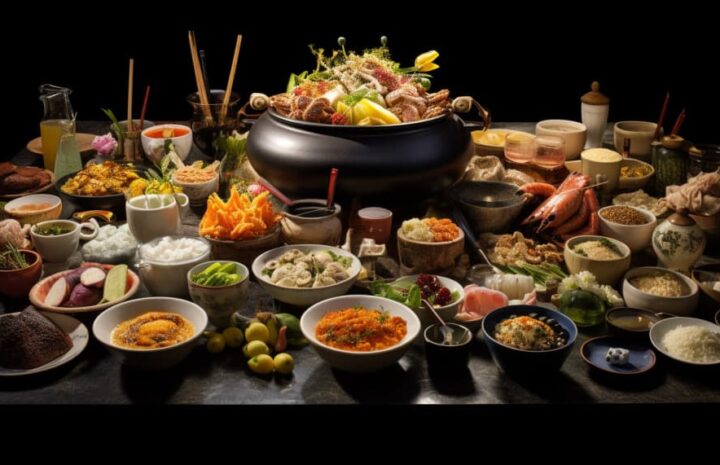North America is not just a continent of skyscrapers, national parks, and multicultural metropolises — it’s also a true treasure trove of culinary discoveries. From smoky barbecues in the southern U.S. states to the delicate aromas of Canadian cuisine and spicy Mexican street food — a gastronomic journey through this region will impress even the most seasoned gourmet. For Hungarian travelers who appreciate bold flavors and heartfelt traditions, this can become a true revelation.
The Flavors of the United States: From Coast to Coast
U.S. gastronomy is as multifaceted as the country itself. Each geographic region offers its own unique dishes, stories, and tastes.
The South: Smoke, Spice, and Soul
Southern U.S. cuisine is an ode to tradition, dominated by slow-cooked meats, spicy seasonings, and cozy homemade recipes. The most iconic dish here is, of course, barbecue. In Texas, beef is preferred; in North Carolina, pork with vinegar-based sauce is popular; and in Louisiana, smoked meat is flavored with Creole spices.
In addition to barbecue, one should try jambalaya — a rice dish with meat, seafood, and vegetables, as well as cornbread and baked beans.
East Coast: Sophistication and Tradition
In New York — a melting pot of cultures — you can taste dishes from all over the world. But it’s here that you should get acquainted with iconic American flavors such as New York-style pizza (with a thin crust) and bagels with salmon and cream cheese.
Along the New England coast, especially in Massachusetts and Maine, clams, lobsters, and the famous clam chowder — a thick soup made with clams, potatoes, and cream — are widely enjoyed.
West Coast: Lightness and Creativity
California and Oregon have long been laboratories of culinary experimentation. Fusion cuisines, and dishes with Asian and Latin American influences, are popular here. For example, fish tacos, sushi burritos, and bowls with quinoa, avocado, and farm-fresh vegetables can all be found in Los Angeles and San Francisco.
Vegetarian and vegan cafes, restaurants serving local produce, organic wines, and craft beverages are another important part of the West Coast’s gastronomic identity.
Canadian Cuisine: Heritage of Tradition and Nature
Canada often remains in the shadow of the U.S., but its culinary landscape is no less captivating. It is especially interesting due to its blend of French heritage, British roots, and local North American ingredients.
Quebec: Francophone Delight
Quebec is a region where French culinary traditions are interwoven with Canadian spirit. The most famous dish is poutine: French fries topped with cheese curds and meat gravy. A simple yet incredibly delicious dish that has become the calling card of Canadian street food.
Additionally, maple syrup is widely used in Quebec, added to desserts, sauces, and even meat dishes. Try pancakes with maple syrup, glazed ham, or sweet pies (tarte au sucre).
British Canada: Hearty and Comforting
In the provinces of Ontario and British Columbia, you’ll find many dishes of British origin: meat pies, fish and chips, and numerous culinary borrowings from immigrant cultures — Chinese, Indian, and Ukrainian.
Especially worth mentioning are wines from the Niagara region and salmon from the Pacific coast — served in both high-end restaurants and cozy family eateries.
Mexico: The Fiery Heart of North American Gastronomy
While the U.S. and Canada offer variety, Mexican cuisine delivers uncompromising passion, aroma, and spice. National dishes are served both in restaurants and on the streets — always with love for bold seasoning.
Street Food: Simplicity Means Flavor
Tacos, burritos, quesadillas, tamales — these are the true symbols of Mexican cuisine. The combination of a corn tortilla, meat (beef, pork, chicken, or goat), vegetables, and spicy sauces results in a true culinary delight.
Street stalls, called puestos, often operate only in the mornings or evenings and offer dishes prepared using time-honored recipes passed down through generations.
Central Mexico: Aztec Heritage
The areas of Mexico City and Puebla are known for more complex dishes such as mole poblano — a sauce made of chocolate, chili peppers, and spices served with turkey or chicken. Or chilaquiles — fried tortillas simmered in sauce with cheese, onions, and eggs.
You should also try aguas frescas — refreshing beverages made from fruits, chia seeds, and flowers, perfect for quenching your thirst in the hot climate.
Why Hungarian Travelers Should Try North American Cuisine
Many dishes from North American cuisine are surprisingly close to Hungarian tastes. They share an emphasis on hearty meals, bold flavors, respect for tradition, and the importance of family dining. This is especially felt in Southern U.S. cuisine and Canadian pies. However, the continent’s gastronomic palette is even more diverse — ranging from sweet maple syrups to fiery Mexican sauces.
For Hungarian gourmets, it’s an excellent opportunity to broaden their culinary horizons and discover new ways to appreciate simple ingredients like corn, beans, meat, and spicy seasoning.
North America is a continent where food becomes a reflection of history, cultural influences, and climate. Each dish here is not just a flavor, but a story — one that can be tasted with a spoon or fork. And for those setting out on a gastronomic journey, it is also a unique way to experience the continent not through a tourist’s eyes, but through the taste of an explorer.
